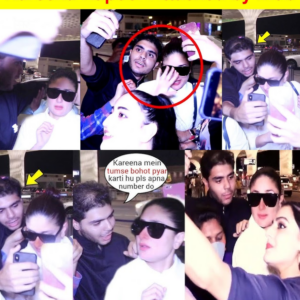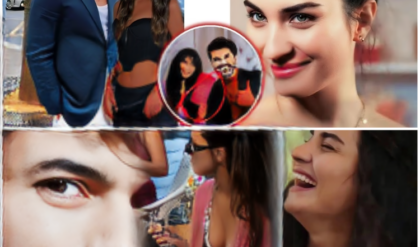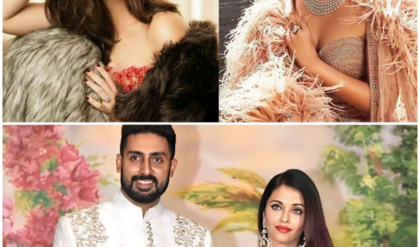Chelsea Manalo Update: Napa-Wow Sila Sa Outfit Ni Chelsea Manalo Sa Miss Universe!
.
.
It’s not every day that a Filipina contestant leaves the world speechless at one of the most prestigious beauty pageants in the world—Miss Universe.
But that’s exactly what Chelsea Manalo did during her time at the iconic event. If you haven’t heard the buzz yet, the spotlight is now firmly on her, not just because of her undeniable beauty and intelligence, but for one unforgettable reason: her outfit.
In the world of beauty pageants, the contestants’ outfits—particularly their national costumes—often become as much of a talking point as their performances during the competition.
The Miss Universe stage is renowned for showcasing the finest, most creative, and culturally rich designs. And when Chelsea Manalo stepped onto that stage wearing her national costume, it wasn’t just another outfit.
It was an explosive fusion of culture, art, and high fashion that had everyone saying, “Napa-wow sila!” (“They were amazed!”).
This article will take an in-depth look at the outfit that became the talk of the Miss Universe pageant, and the powerful statement it made about the Filipino identity on the global stage.
From the design inspiration to the reaction of the audience and the fashion world’s response, we’ll explore how Chelsea Manalo’s national costume went beyond just a piece of clothing—it became a symbol of pride, creativity, and international recognition for the Philippines.
The Stage: Miss Universe and Its Cultural Impact
The Miss Universe pageant is one of the most-watched events in the world, with millions of viewers tuning in to watch beautiful, accomplished women from all over the globe compete for the coveted title.
The pageant has long been known for its tradition of showcasing national costumes that represent the contestant’s country, culture, and heritage.
Each year, the competition becomes a battleground not just for the title of Miss Universe, but also for the best and most striking national costume.
Countries go all out in creating visually stunning and symbolic outfits that reflect their nation’s history, artistry, and aspirations. These costumes are often influenced by the cultural elements that define each country, whether through traditional garments, historical references, or artistic interpretations.
For the Philippines, the national costume is not just a piece of clothing—it is an opportunity to showcase the richness and vibrancy of Filipino culture.
Over the years, Filipino designers have gained international recognition for their innovative and breathtaking designs. The Filipino national costume has evolved over time, incorporating elements of traditional Filipino dress, as well as modern fashion trends and environmental awareness.
It is within this context that Chelsea Manalo made her mark during the competition, with an outfit that would make history and go viral on social media.
Chelsea Manalo: Who Is She?
Before delving into the details of her outfit, let’s take a closer look at who Chelsea Manalo is and why she’s quickly becoming one of the most influential Filipinas in beauty pageants today.
Chelsea Manalo is a Filipino-American model, beauty queen, and social advocate who hails from San Francisco, California. Growing up in the United States, she was always drawn to both the glamour and the responsibilities that come with being a public figure.
Her journey into beauty pageants began with local contests, but she soon set her sights on bigger stages, and she eventually represented the Philippines at Miss Universe—a significant moment for the Filipino community around the world.
With a strong background in advocacy, particularly in promoting mental health awareness and youth empowerment, Chelsea’s platform at Miss Universe went beyond beauty.
Her social causes were as much a part of her presentation as her physical beauty. During her time in the competition, she carried herself with grace, poise, and confidence, solidifying her position as a role model for young women everywhere.
However, it wasn’t just her advocacy that won hearts; it was her ability to seamlessly combine her Filipino heritage with modern style and elegance.
This combination was most evident in her national costume, which stood out as a powerful fusion of traditional Filipino elements with cutting-edge design.
The Outfit: A Masterpiece of Art and Culture
Chelsea’s outfit for the Miss Universe pageant was nothing short of a showstopper. Designed by Filipino designer, Rajo Laurel, the national costume was a statement in every sense of the word.
The ensemble was inspired by Filipino heritage, and it was a stunning representation of both the natural beauty of the Philippines and its rich cultural history.
1. The Inspiration Behind the Design
According to Rajo Laurel, the design was influenced by various aspects of Filipino culture, incorporating both natural elements and historical references. The costume was a tribute to the beauty of the Philippines’ diverse landscapes—from the lush rainforests and pristine beaches to the iconic Banaue Rice Terraces and intricate Filipino weaving traditions.
At the same time, the outfit was designed to highlight the strength and resilience of the Filipino people. Chelsea’s outfit was symbolic of Filipina women—nurturing, proud, and beautiful in both form and function.
The intricate details of the design were carefully thought out to ensure that every component of the outfit told a story.
The national costume wasn’t just a costume—it was an experience. From the moment Chelsea stepped onto the stage, it was clear that the outfit was not only a visual masterpiece, but also a cultural representation that made the Filipino community proud.
2. Key Elements of the Costume
The costume featured a blend of contemporary and traditional elements, combining the Baro’t Saya (traditional Filipino dress) with modern silhouettes. The top part of the outfit was designed with intricate embroidery, echoing the patterns and weaving techniques found in indigenous Filipino fabrics like Inabel and Piña. The flowing skirt, meanwhile, was made of transparent, ethereal fabric that mimicked the movement of water, symbolizing the numerous rivers and coastlines of the Philippines.
The pièce de résistance, however, was the headdress—a jaw-dropping creation made of intricate beadwork and metal accents, representing Filipino craftsmanship and the Philippines’ rich traditions in jewelry making.
The headdress was large enough to catch the light from every angle, but it was also delicate and beautifully crafted, showcasing the fine details that set it apart from typical national costumes.
One of the most talked-about elements of the costume was the giant butterfly wings that Chelsea wore during the final presentation. The butterfly has long been a symbol of transformation, beauty, and freedom, and it perfectly encapsulated the spirit of the Philippines—a nation of vibrant culture, resilience, and hope.
The wings were inspired by the Troides Helena, a rare butterfly species found in the Philippines, which also became a symbol of the nation’s biodiversity and endemic species.
3. The Overall Aesthetic
When Chelsea took the stage, she looked nothing short of regal. The shimmering golds, blues, and whites of the costume created a striking visual that captured the audience’s attention instantly.
The play of colors, fabrics, and textures was nothing short of a masterclass in modern fashion. The national costume radiated pride and elegance, and Chelsea carried it with such poise that it became the talk of the evening.
In addition to its beauty, the outfit was designed for practical performance, allowing Chelsea to move gracefully and comfortably as she walked across the stage.
This practical yet breathtaking design element is what made the outfit not just a fashion statement but also a strategic choice for the pageant, showing that beauty and functionality can coexist harmoniously.
The Response: A Social Media Frenzy
As soon as Chelsea stepped onto the Miss Universe stage in her breathtaking national costume, the reactions on social media were immediate and overwhelming.
Twitter, Instagram, and TikTok were flooded with comments, photos, and videos from fans, influencers, and celebrities who praised her for the outfit’s artistry and symbolism.
Fans were quick to comment: “Napa-wow sila sa outfit ni Chelsea Manalo!”—expressing their astonishment and admiration for the outfit and how well it represented the Philippines.
International fashion bloggers and critics were quick to weigh in, calling the outfit one of the best national costumes in recent years. Many highlighted its innovative design and the way it reflected the Philippines’ cultural heritage while embracing contemporary fashion trends.
Even major fashion magazines, such as Vogue and Harper’s Bazaar, featured Chelsea’s ensemble, noting its sophistication, symbolism, and beauty.
The hashtag #ChelseaManalo trended worldwide as people from all over the world began to discuss and share images of the Filipino beauty queen’s national costume.
It didn’t take long for the video of her appearance to go viral, with countless shares and reposts on various platforms.
The Aftermath: The National Costume Becomes a Cultural Phenomenon
Following the Miss Universe event, Chelsea Manalo’s national costume continued to be a talking point. Not only did it highlight the talents of Filipino designers, but it also put Filipino artistry on the map in the world of high fashion.
Many people from the Philippines and around the world began to engage in conversations about the significance of Filipino craftsmanship and the potential of Filipino designers to impact the global fashion scene.
The country’s rich textile heritage, from Manila shawls to loom-woven fabrics, was celebrated in the context of global fashion.
Moreover, the national costume sparked a wave of pride among Filipinos, uniting them in appreciation for their culture and the way it was showcased on such a monumental stage.
Conclusion: A Fashion Moment for the Ages
Chelsea Manalo’s national costume at Miss Universe was more than
News
Scandalous! Celebrity Caught in a Shocking Incident with a Fan in Public!”
Shocking Incident Involving Kareena Kapoor: A Fan Misbehaves in Front of the Media In a deeply unsettling incident, Bollywood actress Kareena Kapoor Khan found herself at the center of an unexpected and distressing situation when a fan reportedly touched her…
End of content
No more pages to load






